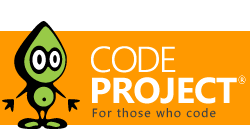Traditionally used for desktop graphical user interfaces (GUIs), this architecture has become extremely popular for designing web applications.
Description
As with other software patterns, MVC expresses the "core of the
solution" to a problem while allowing it to be adapted for each system. Particular MVC architectures can vary significantly from the traditional description here.
Components
The central component of MVC, the model, captures the behavior of the application in terms of its problem domain, independent of the user interface.
- The model directly manages the data, logic and rules of the application.
- A view can be any output representation of information, such as a chart or a diagram. Multiple views of the same information are possible, such as a bar chart for management and a tabular view for accountants.
- The third part, the controller, accepts input and converts it to commands for the model or view Continue Reading.
Quick Links
Recommended Sites
Downloads
- MVC
- Visual Studio IDE
- Visual Web Developer IDE
- Webmatrix
- Database Server
- UI Kits

